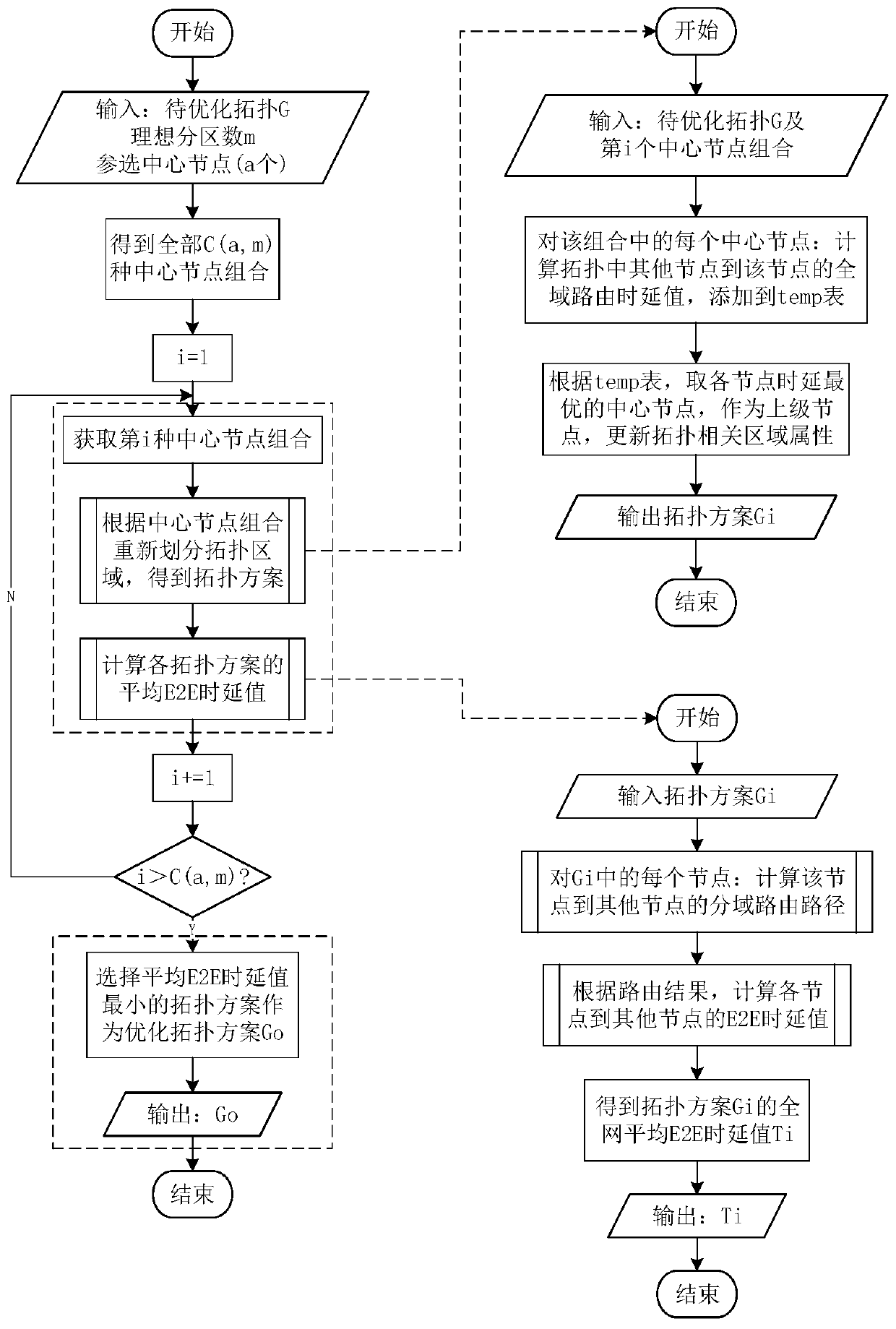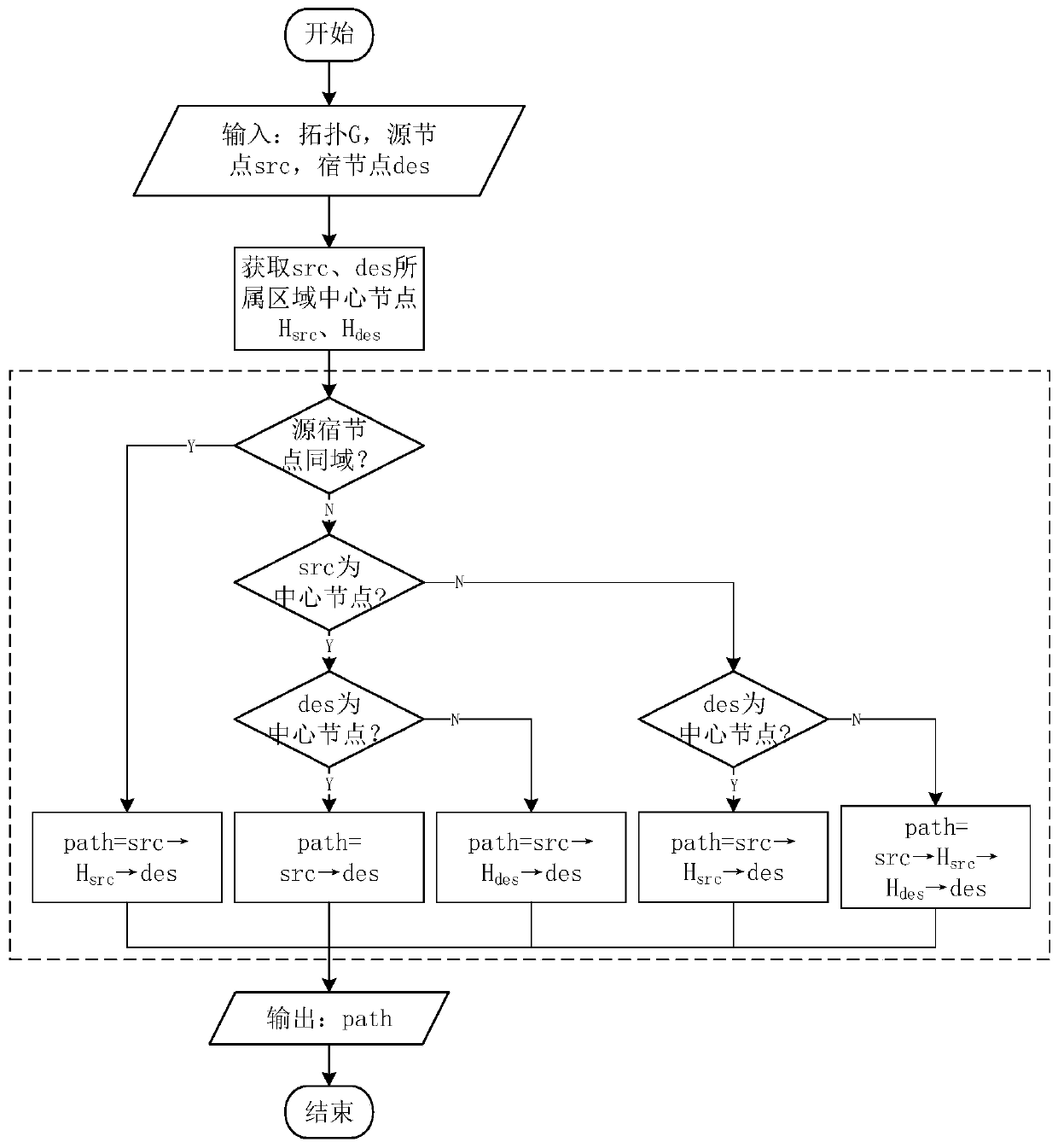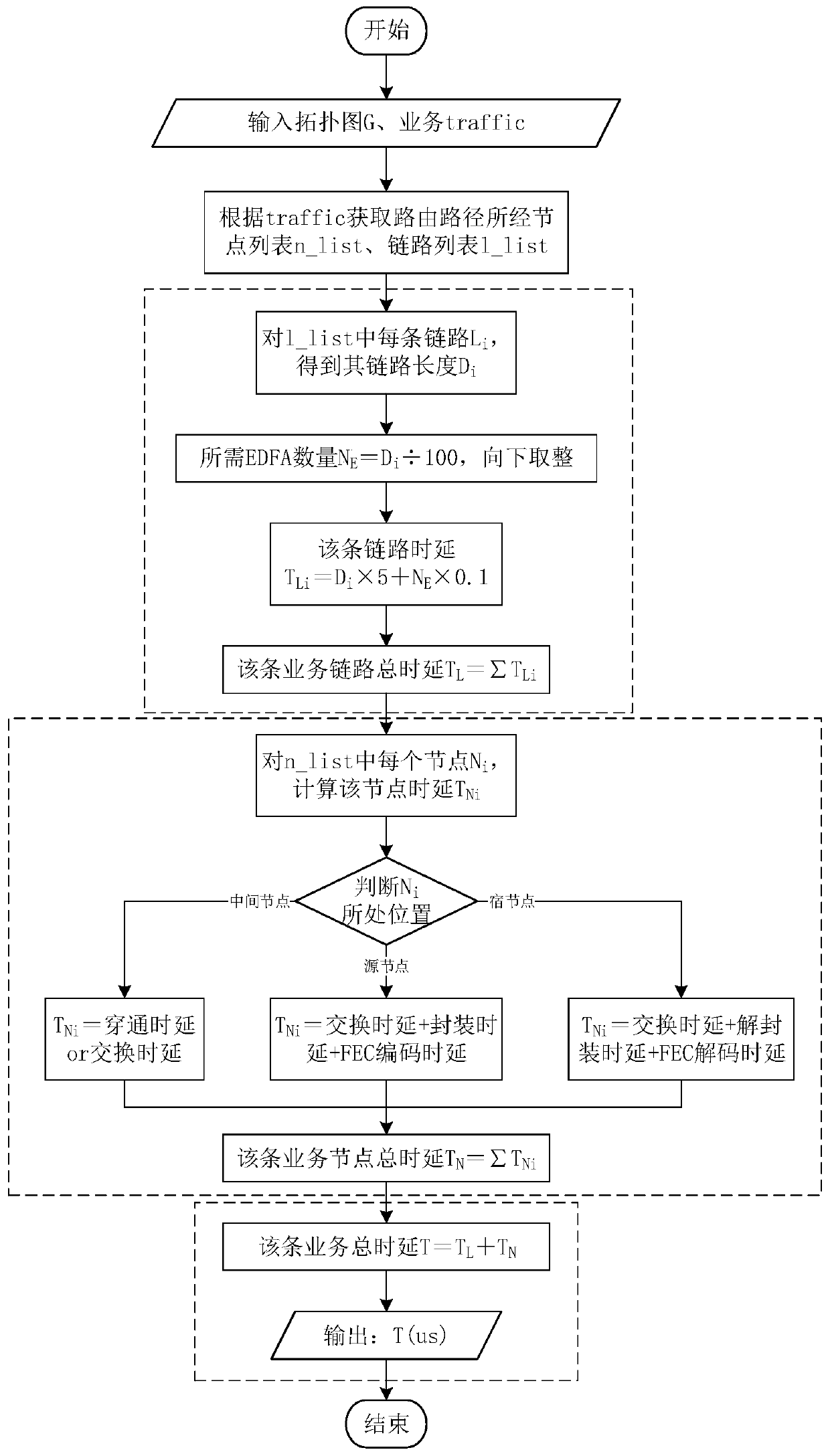Network domain partitioning method for reducing end-to-end time delay of optical transport network
An optical transport network and delay technology, applied in the field of optical communication, can solve the problems of increased end-to-end transmission delay, service detours, etc., so as to reduce the end-to-end delay of services, ensure low delay, and improve network time. The effect of extension
- Summary
- Abstract
- Description
- Claims
- Application Information
AI Technical Summary
Problems solved by technology
Method used
Image
Examples
Embodiment 1
[0104] Take the six-node topology as an example for illustration, such as Figure 4 As shown, assuming that all nodes in the network can be used as central nodes, the network is divided into two areas, and the specific steps are as follows:
[0105] 1. Input the six-node topology as the topology G to be optimized, the ideal number of partitions m=2, and the set of participating central nodes N={n 1 ,n 2 ,n 3 ,n 4 ,n 5 ,n 6}.
[0106] 2. According to the topology G to be optimized, the number of ideal partitions m and the set N of participating central nodes, all the common A combination of central nodes.
[0107] Among them, each central node combination contains two central nodes in the central node set N, which are:
[0108] C 1 =(n 1 ,n 2 ),C 2 =(n 1 ,n 3 ),C 3 =(n 1 ,n 4 ),C 4 =(n 1 ,n 5 ),C 5 =(n 1 ,n 6 ),C 6 =(n 2 ,n 3 ),C 7 = (n 2 ,n 4 ),C 8 =(n 2 ,n 5 ),C 9 =(n 2 ,n 6 ),C 10 =(n 3 ,n 4 ),C 11 =(n 3 ,n 5 ),C 12 =(n 3 ,n 6 ),C...
Embodiment 2
[0133] Such as Figure 5 As shown, the six-node topology G has been divided into regions, and the node pairs (n 3 ,n 4 ),(n 5 ,n 6 ),(n 5 ,n 1 ),(n 3 ,n 6 ),(n 4 ,n 1 ) between domain-specific routing paths.
[0134] (A) source node src=n 3 , sink node des=n 4
[0135] 1. Input the topology G of the divided area, source node src=n 3 , sink node des=n 4 ;
[0136] 2. According to the area division of G, the central nodes of the source and sink nodes are respectively H src =n 5 、H des =n 5 ;
[0137] 3. According to the area division of G, it can be seen that the source and sink nodes belong to area1, so use the D algorithm to calculate src→H des → des, can get path=[n 3 ,n 5 ,n 4 ].
[0138] (B) source node src=n 5 , sink node des=n 6
[0139] 1. Input the topology G of the divided area, source node src=n 5 , sink node des=n 6 ;
[0140] 2. According to the area division of G, the central nodes of the source and sink nodes are respectively H src =...
Embodiment 3
[0155] Such as Figure 5 As shown, the six-node topology G has been divided into areas, and the known service routing path P=[n 4 ,n 5 ,n 6 ,n 1 ], assuming that the service bandwidth B=1000MHz, calculate the node pair (n 4 ,n 1 ) service end-to-end delay. For the convenience of description, it is assumed that the nodes in the topology are all 100Gbps OTN equipment, and the intermediate nodes adopt optical layer scheduling. Specific steps are as follows:
[0156] 1. Input topology G, business traffic=(B,P)=(1000MHz,[n 4 ,n 5 ,n 6 ,n 1 ]);
[0157] 2. Obtain the node set n that the business passes through list ={n 4 ,n 5 ,n 6 ,n 1}, link set l list ={(n 4 ,n 5 ),(n 5 ,n 6 ),(n 6 ,n 1 )};
[0158] 3. According to l list Calculate the link delay of the service:
[0159]
[0160] That is, the total end-to-end link delay T of this service l =1750.1us.
[0161] 4. According to n list Calculate the node delay of the service:
[0162] node ...
PUM
 Login to View More
Login to View More Abstract
Description
Claims
Application Information
 Login to View More
Login to View More - R&D
- Intellectual Property
- Life Sciences
- Materials
- Tech Scout
- Unparalleled Data Quality
- Higher Quality Content
- 60% Fewer Hallucinations
Browse by: Latest US Patents, China's latest patents, Technical Efficacy Thesaurus, Application Domain, Technology Topic, Popular Technical Reports.
© 2025 PatSnap. All rights reserved.Legal|Privacy policy|Modern Slavery Act Transparency Statement|Sitemap|About US| Contact US: help@patsnap.com



